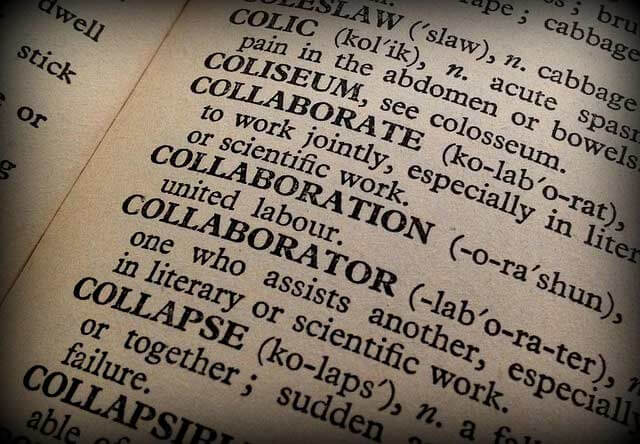Updated July 7, 2023
Introduction to Organizational Work Culture
Have you ever encountered the mythical existence of an “organizational work culture”? We all believe in its existence, and it’s an integral part of the work we perform along with a team and a hierarchical structure within an organization. But the definition is beyond us.
Some organizations have a casual work environment with exciting organizational work culture, while others have a more formal setup with stress on professional etiquette as their work culture. All these are different ways of ushering in benefits and profits to the organization through efficient utilization of the workforce present in the office. But how important is this organizational work culture that we as a society rely on? In this article, we’ll understand what an organizational work culture is and learn more about what makes up this unique culture for every single organization on the planet’s surface.
What is Organizational Work Culture?
To wrap your finger around the concept of organizational work culture, you must understand human behavior in a workplace. Everyone congregates to work towards a common company goal that the organization sets up for us. When we congregate toward this goal, we exhibit a certain routine and mannerisms that form patterns and habits within our thought processes. Altering this behavior to a common mindset to head forward with the business plan can be, in a way, termed as the organizational work culture that the employees within the organization take up.
Organizational work culture is sharing certain notions and ideas, a set of workplace values, and a common vision/mission to get like-minded people together to fulfill company goals and objectives.
Organizational Work culture positively influences how employees behave, work, and even dress in a workspace and their mindset during work hours. These behaviors and the values that demarcate the boundaries for professional etiquette in your organization form a unique social system within the company. In this social system, each organization is unique. While hiring employees on the market, employers try and design a recruitment system with this organizational work culture in mind. This way, they can be assured that the people they hire will be compatible enough with the prevalent work culture in their organization.
Characteristics of Organizational Work Culture
As mentioned above, each organizational work culture is unique and distinct in how it drafts its values, policies, and code of conduct. Now, since we know a little more about how to define an organizational work culture, let’s dive in deep as we need to understand what its characteristics are and how through these characteristics, it develops a whole new image for itself, uniquely at every organization.
1. A Platform for Collaboration
Many individuals come together to work for an organization, to reap benefits for themselves and contribute their skill sets towards the organization’s growth. With a work culture, organizations provide these individuals with a platform to collaborate and bring in the best results possible. A collaborative workforce is always a workforce to reckon with as their ideologies and mindsets have specks of compatibility written all over them, which makes them ideal employees for the work culture adopted in the company.
2. A Competitive Stage for Employees
With different skill sets and different job opportunities, there is bound to be a competitive environment harnessed within an organization. In such cases, there is an even higher possibility for employees to start a bickering war if their way of thinking or behavior is in vast contrast. Here is where organizational work culture plays an important yet vital role in promoting healthy competition and not something as destructive as work wars among employees.
3. Guidance and Direction
A work culture promotes documentation and adoption of certain company policies and work ethics that can steer you clear through working at this organization. With work cultures, clarity on the roles and responsibilities, and guidelines set to help with employee promotion and skill enhancement throughout their tenure here are provided.
4. Healthy and Interactive Environment
With a healthy competitive environment comes the opportunity for real-time interactivity to boost your networking skills, communication skills, and overall personality. This can be achieved through a healthy organizational work culture followed in the organization.
5. Implementation of Policies
In a work environment, not all are familiar with the organizational work culture unless they have had an experience with it first-hand. For example; I used to work in an organization that promoted a casual organizational work culture that would dictate a relaxed environment for employees to have flexible work hours shift and the opportunity to dress up casually. At the same time, company policies would dictate a set of rules and regulations that would keep the work that we did in a professional sense and keep up to the mark as per international work standards and professionalism. Normally, in a self-sustained organization, the HR department is the one to drive this organizational work culture within the office space with activities and policies to ensure everyone is on the same page.
6. Strength Identifier
Organizational Work culture encourages employees to bring out the best they have in their kitty. Playing on their strengths can be a great thing as they can then have the opportunity to exhibit their skills and earn a great place for themselves in the organization. An organizational work culture puts “you” in the spotlight and helps you remain comfortable while at a workplace of your choice.
Qualities of Organizational Work Culture
With modern employees spending more than 40 hours in their office premises, it’s a privilege to have an organizational work culture deployed to keep things light and fluffy within an organization for the multiple employees working. It’s always important for us as management to understand its relevance and how we can put it to use for the success of our business and organizational goals. Understanding its relevance would need a thorough understanding of the qualities it brings to the table in a jammed packed environment. So, bringing to you the many qualities of our work culture.
1. Loyalty
Being a part of an organizational work culture enables you to feel like you’re part of a family, where you are cared for, and your growth comes first, which in turn will boost the growth observed by the organization. This way, the company gains your trust and loyalty and helps you to stay motivated to efficiently and effectively contribute to the organization’s goals and objectives. A work culture allows employees to be duly recognized in the way they would want to be recognized, whether through rewards or appreciation; the work culture encompasses all of that and enables you to give in your best to the company.
2. Uniqueness
The uniqueness of organizational work culture is its defining factor and can be a turning point in your career. Being in an environment that grooms you in the best way possible can help you advance in all your future endeavors. For example, a fresher in a more liberal work culture would be given an environment to help them transition smoothly into corporate life. By tasting both leniency and professionalism simultaneously, your new employee will be able to demarcate and adjust to businesses quickly. This will enable your fresher to be an ideal employee in the future with promotions or changes having them adjusted to a more serious setup.
3. Collaboration
Being instrumental in bringing together many different personalities under one roof can be quite a task, but having an organizational work culture drive this notion can be rewarding for an organization. Helping diversity to thrive within a single system can only be possible through high levels of collaboration. Aiding collaboration is one quality that holds grave importance in work culture. The way we collaborate and expand into teamwork can help us coerce into a strong unit to make a difference in the goals we want to achieve.
4. Identity
It’s the culture that defines the identity of an organization. Take, for example, Google. The organizational work culture adopted at Google is praiseworthy. With much emphasis on employee satisfaction and growth, Google maintains an open culture that promotes ideas to be belted out by any individual within the company, irrespective of the strata they belong to within the business. This forms the identity of Google as an employee-centric and collaborative organization, with ideas and innovations flowing from every nook and corner. This is how we perceive them and how they appear in front of their clients and customers. This brings in place recognition and reputation.
5. Direction
The great thing about work culture is that it lays down certain guidelines and modes of direction for the employees to follow. This way, it can keep tabs on employees who go beyond the behavioral boundaries set within the work culture. This would mean the employee isn’t fit on the compatibility scale to be an ideal resource for the organization. This saves the career of the employee who will be marvelous at some different job or place, saving on Monday blues and can even help the organization to get hold of dedicated individuals.
Types of Organizational Work Cultures – 4Cs
With differences in organizations and their values, businesses always have different types of streamlined work cultures. As I had mentioned before, every organization boasts of a unique work culture for themselves; there is always a type that they fit into. We will look at the 4Cs of organizational work cultures and place a perfect picture in our minds that will reveal the importance and the crucial role that work cultures play in promoting healthy work relationships and high performance within our organizations.
1. Collaborative Work Culture
For organizations that require the feel and touch of many skilled individuals to achieve a business goal, a collaborative work culture would seem like their safest bet and best choice. In a collaborative work culture, employees are encouraged to work in perfect harmony and cooperate on resolving business issues through projects and team sessions. With teamwork as their motto and many skilled hands coming in with expertise from different backgrounds, collaboration is needed for the smooth functioning of the team.
Collaboration can be between members of the organization or with external stakeholders and clients. Different organizations and industries can similarly utilize a collaborative work culture to yield the qualities we spoke of.
2. Competitive Work Culture
In stark contrast to the collaborative work culture, we have a competitive work culture that doesn’t join team members together but fuels them against each other for a kick in the benefits and results yielded. With competition comes the promise of being better with each passing day. These work cultures have set targets to achieve, which are crucial company objectives.
These organizations mostly have their business model driven by quantities rather than quality. With less emphasis or need on quality, employees can debar time and scope and go forward towards earning those bonuses and incentives. These work cultures encourage employees to set their eyes on the target and mostly drive them to achieve those targets individually rather than as a team.
3. Creative Work Culture
Creative work cultures allow employees to reach their potential and develop beaming ideas and innovations. These organizations need employees to be at their creative end and work towards the dynamism of the business. Companies focused on art and creative works mostly drive this work culture among their employees.
As opposed to the competitive and collaborative work cultures, though there is an emphasis on individuality and cooperation, there is a lot of stress on quality and thinking out of the box while pitching unique and distinctive ideas.
4. Controlled Work Culture
Once a prominent work culture in the industrial space, a controlled work environment normally runs on an autonomous rule. With centralized figures taking the lead, this type of work environment was very restrictive to hierarchy and more like a cabin-cubicle working system.
Those advocating for an ideal society would highly schedule and brutally streamline controlled work cultures for comfort, emphasizing strict rules and regulations. With strict timings and complete formal dress codes, you can now see why this type of organizational work culture is now mostly a thing of the past.
Summary
Organizational work culture is a driving force behind large and small organizations alike. This re-institutes our beliefs and values and helps us keep track of the corporate footprint that we leave once we’ve crossed the path. Different organizations have different work cultures with a common aim, to ensure that the company goals are fulfilled according to the behaviors of the individuals working to achieve them. The work culture we implement within our organization determines the business’s success, as the people head the deliverables into outputs. To conclude… Organizational work cultures are indeed essential.
Recommended Articles
We hope that this EDUCBA information on “Organizational Work Culture” was beneficial to you. You can view EDUCBA’s recommended articles for more information.






